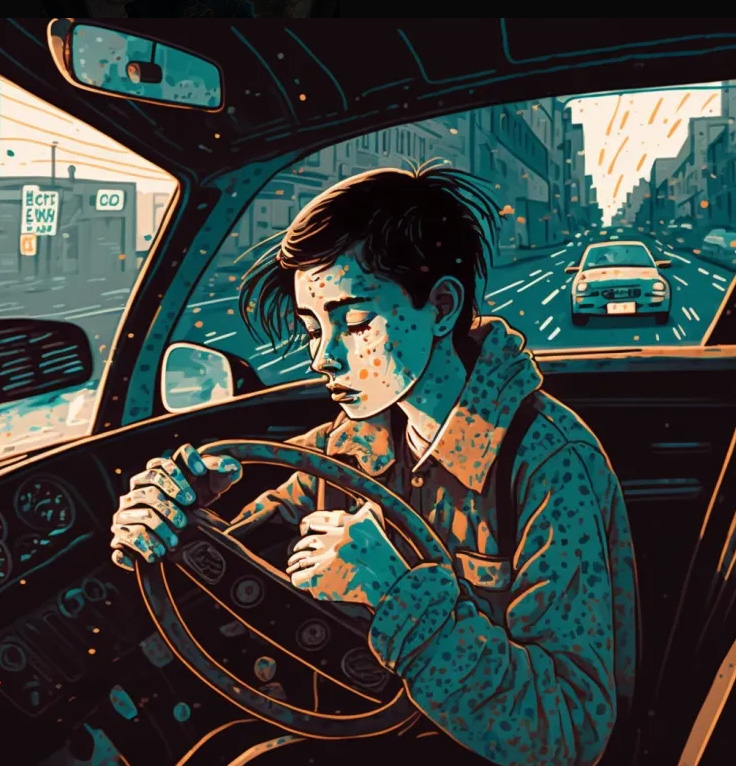FACT: Drowsy driving is impaired driving, just like drunk, drugged and distracted driving

You may not think of drowsy driving as being a serious epidemic on our roads, but the statistics reveal the truth on the matter. In the U.S., drowsy driving is one of the leading causes of accidents and fatalities. The National Highway Traffic Safety Administration (NHTSA) estimates that drowsy driving plays a role in at least 100,000 car accidents each year, resulting in an estimated 1,550 deaths and 71,000 injuries. In reality, those numbers are much higher since most minor accidents are never reported. In their 2020 overview of fatal crashes, the NHTSA reported 697 drowsy driving related fatalities. The number of drowsy driving crashes and fatalities are much higher than in years past, no doubt because of the fact that sleep disorders in America are a growing trend. And while we often see data that shows that that males are involved in more car crashes than females, when it comes to drowsy driving, males and females are equally affected.
So, who is at the greatest risk of drowsy driving related crashes? You know the answer already: teens. While most American’s are sleep deprived, for teenagers, lack of sleep is an even bigger issue. Studies show that 60-70% of teens suffer from sleep deprivation. One study found that 73% of high schoolers didn’t get enough sleep each night. It’s no wonder why drowsy driving is such a serious issue in 2023.
Statistics and Facts About Drowsy Driving
Drowsy driving is a major safety concern for everyone, even those not behind a wheel. We hear too many stories about cars striking and seriously injuring or killing bicyclists or pedestrians, so this doesn’t ease the mind of parents of young children who walk or bike to school. The statistics on drowsy driving in the U.S. confirm this. Did you know:
- An estimated 328,000 drowsy driving crashes occur every year.
- An estimated 6,000 people are killed in drowsy driving related fatality accidents (most go unreported)
- According to a study by the Centers for Disease Control (CDC), 1 in 25 adult drivers report having fallen asleep at the wheel in the past 30 days.
- Being awake for 24 hours is and driving is worse than driving with a .08% BAC. It is similar to having a BAC (blood alcohol concentration) of .10%.
- 21 hours without sleep is similar to having a 0.08% BAC.
- Drivers between the ages of 18-29 years old face the highest risk. This age group reported falling asleep while driving twice as often as drivers over 30 years old.
Sleeping Habits of Teenagers
Teenagers are often not getting the recommended amount of quality sleep each night; the average teen needs 8-10 hours per night, but the great majority simply do not. Whether it’s an addiction to social media, video games, binge watching Netflix shows, or being inundated with loads of homework, there are plenty of things out there that are part of the problem. So, why is sleep so important for teenagers? Adequate rest helps regulate hormones which in turn promote healthy and proper physical and mental development.
Sleep quality affects the functioning of the prefrontal cortex of the brain which is linked to cognitive activities, such as creativity, integration and planning.
As it relates to driving, a rested brain will make better driving decisions while operating a vehicle that can quickly change to a weapon at any point in time.
Social Media Addiction and Sleep Deprivation
Social media addiction and sleep deprivation can be a cause for concern for parents. Most teens in 2023 are addicted to at least one social media app, such as TikTok, Snapchat, Instagram or Youtube. Recent studies show that social networking site usage can lead to decreased quality of sleep; this in turn, can cause dopamine-releasing spikes in the brain that encourage people to stay up late scrolling through their feeds. It is thus important to take steps towards avoiding this potentially dangerous trend.
Ways to Improve Sleep Habits of Teenagers
First and foremost, restricting or limiting device usage in the evenings is one of the most important ways to improve sleep. Blue light harms our ability to sleep, so screen usage of any kind (phone, computer, TV) will impair sleep quality.
Any parent who has tried will tell you that trying to control their teens usage of social media can be incredibly challenging. Understandably so, as it truly is an addiction. Limiting their usage of social networking sites is key. There are apps out there that allow you track your teens app usage of social media, so that you are aware of how much time they are actually spending. An addiction to social media is usually the #1 reason why teens in 2023 have sleep issues.
Avoiding heavy meals, nicotine and caffeine before bedtime are also important for improving sleep. Avoiding caffeine after a certain time in the day is wise. Heavy meals can disrupt deep sleep.
Ensuring an optimal sleep environment is also crucial to improved sleep. This means minimizing noise, as well as controlling the temperature in the room. Excessive heat/cold temperatures are a recipe for poor sleep. One of the most important and well-known circadian rhythms is the sleep-wake cycle. Circadian rhythm cues us to feel awake during the day and sleepy at night. Light is the most important external factor, so making sure that rooms are dark enough is also crucial to an optimal sleep environment.
Establishing a regular nighttime bedtime schedule with consistent wake times can also benefit teens by providing much-needed structure and consistency.
Solutions to Prevent Drowsy Driving Among Teens
- Make sure teenagers get adequate rest before driving (8-9 hours of sleep per night)
- Educate your teens on the dangers of drowsy driving
- Avoid driving when tired (if you’re yawning, it’s not a good time to drive)
- Teach teenagers how to recognize signs that they are driving tired (yawning, drifting in lanes, driving over rumble strips, etc.)
